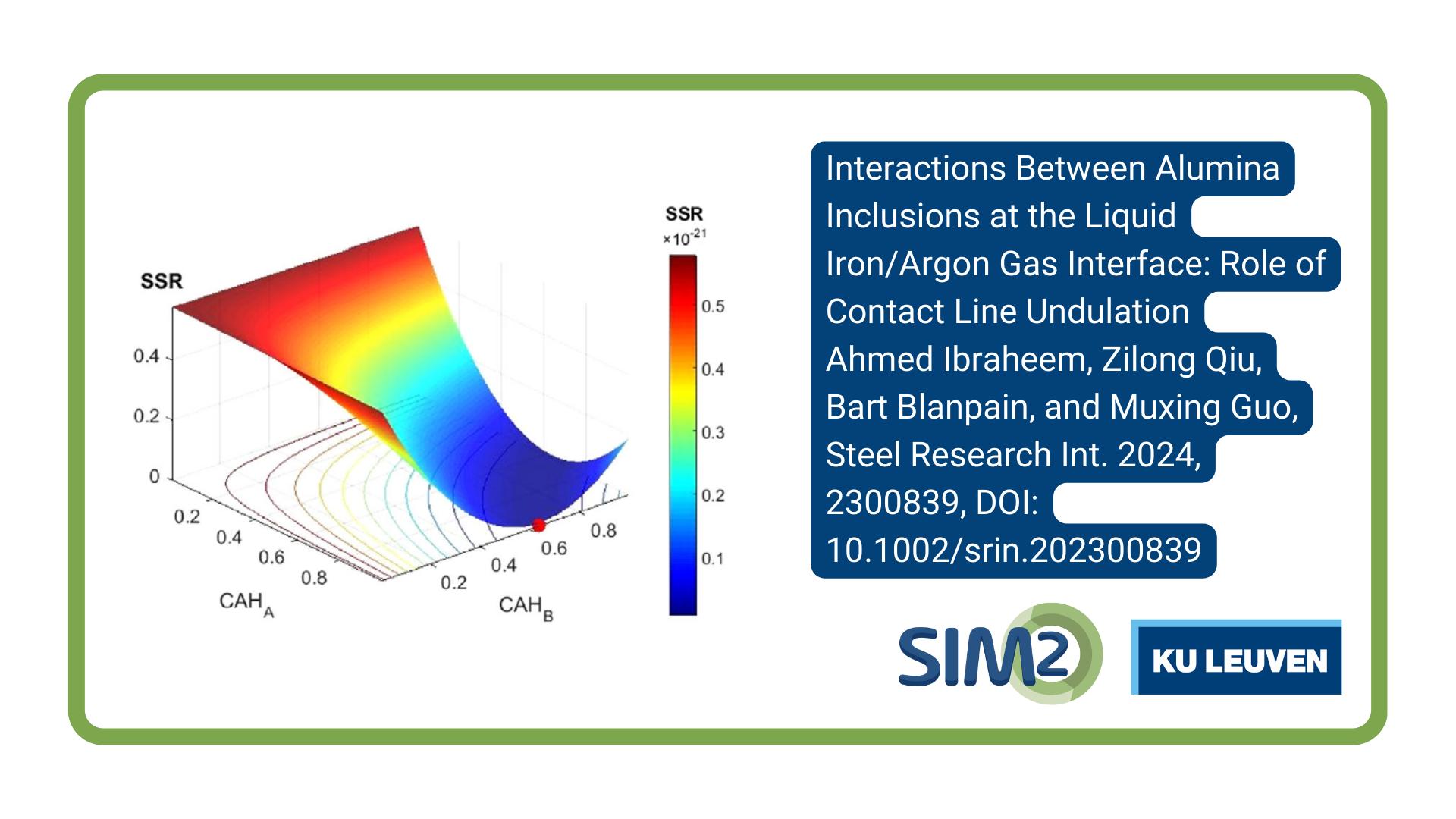Ahmed Ibraheem, Zilong Qiu, Bart Blanpain and Muxing Guo of the Department of Materials Engineering,
KU Leuven, have published a new Research Article in the journal Steel Research International on the subject of interactions between alumina Inclusions at the liquid-iron/argon-gas interface.
A deep understanding of the behavior of nonmetallic inclusions is essential for steel cleanliness control. The behavior of alumina inclusions at the liquid-iron/argon-gas interface is investigated using a high-temperature confocal scanning laser microscope. The obtained images are used to determine the moving velocity of the inclusions on the interface. The obtained experimental data are quantitatively evaluated using the lateral capillary interaction model for multipole orders established by Danov–Kralchevsky while taking into account the resistive drag force. The attraction forces calculated from these data are in the range between ≈10-13 and ≈10-11 N. The best-fitting model is assigned for each case. The multipole models almost counterbalance the drag force, indicating a good interpretation of the interaction between the inclusions. Moreover, the acting length of this interaction is examined and compared to the previous work on Ce2O3 inclusions. It is found that alumina inclusions generally exhibit a larger acting length at a large critical radius and a smaller acting length at a small critical radius when comparing them to their counterpart cerium oxide inclusions. Considering the particle shapes, high shape irregularity is better interpreted by higher orders of the multipoles.
Reference
DOI: 10.1002/srin.202300839
Acknowledgement
The authors would like to acknowledge the support from the KU Leuven HiTemp Center.





